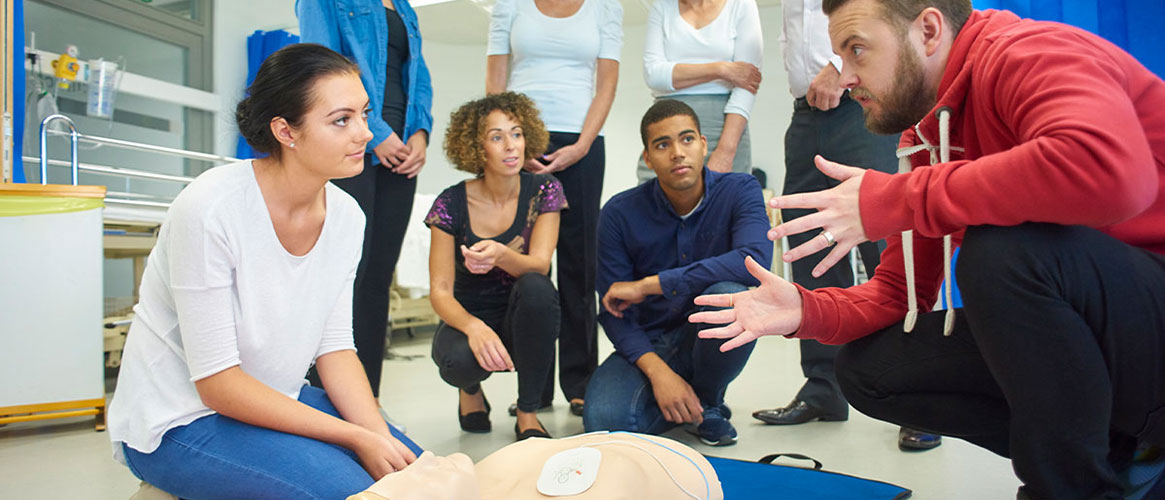More than 350,000 people suffer out-of-hospital cardiac arrest every year in the United States. Approximately ten percent survive. Given that death can occur within ten minutes without immediate treatment, you and your staff should be ready to act if an employee goes into cardiac arrest.
Cardiac arrest definition and symptoms
The American Heart Association (AHA) defines cardiac arrest as “the abrupt loss of heart function in a person who may or may not have been diagnosed with heart disease.” It occurs when the electrical impulses in the heart become irregular, the heart beats irregularly, and/or stops beating. Symptoms include loss of consciousness, lack of pulse, and gasping or no breathing at all.
Cardiac arrest can happen suddenly or following other symptoms.
If you suspect someone is in cardiac arrest, call 911 immediately. In addition, the AHA recommends starting CPR right away, and using an automatic external defibrillator (AED) if one is available. Having employees trained for both CPR and AED use can save someone’s life.
CPR and AED training
The American Red Cross and American Heart Association offer CPR and AED certification. Both provide different levels of training. For example, there are courses for those learning for the first time and those looking to renew their certification. The agencies also provide training specifically for emergency responders and other medical professionals under the name Basic Life Support (BLS). Classes are offered online, in person, or a combination of both. Depending on the type of class or level of training, classes can take one-to-three hours or they may require a full day. Classroom training is available during the day, evening, and on weekends.
You can have the training right at your workplace or you can send employees to take a class near your location. The benefit to having the training at your workplace is the convenience for your employees—more people may attend. However, if you have a small location without the needed space, it’s good to have the option of an offsite class nearby.
What is an AED?
AEDs measure the victim’s heart rhythm and identifies when to use electric shock (defibrillation). It then prompts the rescuer on the next steps to take. 911 operators can also give you instructions if needed.
According to the American Heart Association, a cardiac arrest victim’s chance of survival decreases seven-to-10 percent for every minute an AED is not used.
Should I get an AED?
California has specific regulations for purchasing and using AEDs. Should you decide to obtain an AED for your workplace, the supplier must provide you with detailed information governing the use, installation, operation, training, and maintenance of the AED.
If you don’t have an AED at your workplace, you can find nearby registered AEDs in your area through 911 dispatcher registries, online registries, and mobile device apps. Many communities are participating in “HEARTSafe” campaigns where trained volunteers agree to get notifications and respond to cardiac arrest incidents.
Cardiac arrest is one of the leading causes of death in the United States. Investing in CPR and AED training for your employees is an investment in their safety too.
